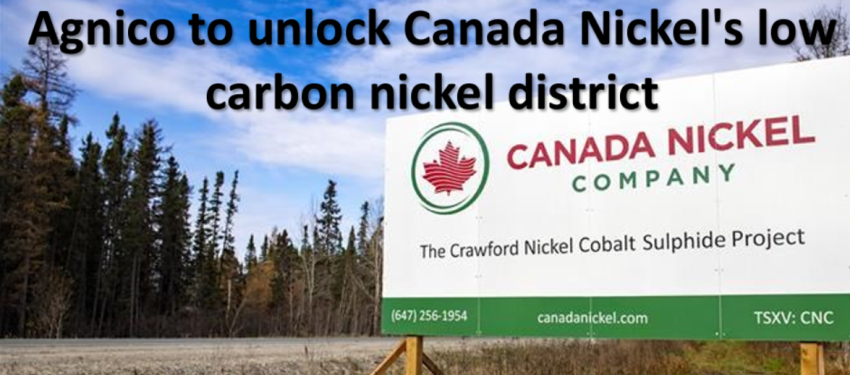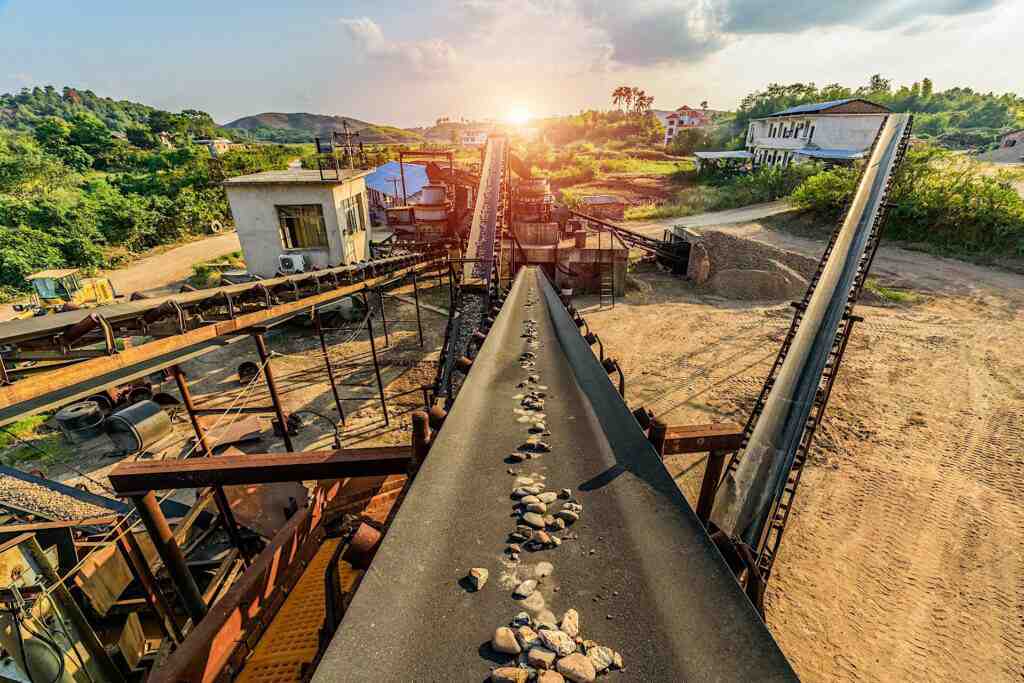
Agnico Eagle Mines has invested C$23.1M to take a 12% stake in nickel explorer Canada Nickel, which could help unlock a much bigger nickel sulphide district than the Crawford deposit the junior is advancing towards a production decision.
The charity flow-through financing provided by Agnico must be used for exploration and Canada Nickel has many other targets to test.
"There could be half a dozen more Crawfords in the area, so this will allow us to unlock that and demonstrate the potential to be the world's largest nickel sulphide project," Canada Nickel Company Chief Executive Mark Selby told Skarn Bulletin.
If successful, Canada Nickel's properties could see northeast Ontario become a zero-carbon industrial cluster, partly because the ultramafic rocks which host Crawford’s nickel mineralisation naturally sequester and store carbon dioxide.
"Having ultramafic rocks in conjunction with a natural gas pipeline, infrastructure in place to rail products in and out, communities that are happy to see industrial processing, which there are not many of around Canada, and the availability of zero-carbon electricity from hydro means relocating industries that generate a lot of carbon there creates tremendous opportunities," said Selby.
An October 2023 feasibility study detailed annual production from Crawford of 38,000t of nickel, 800t of cobalt, 13,000oz of palladium and platinum, 1.6Mtpa of iron and 76,000t of chrome over a 41-year mine life from reserves of 3.8Mt of contained nickel in 1.7Bt grading 0.22% nickel.
Carbon
Carbon sequestration is a central part of the design of Crawford, where Canada Nickel will use its IPT Carbonation process to capture and store CO2 within the mineral lattice of the tailings, which will allow the company to benefit from the growing low carbon zeitgeist among governments, citizens, automakers and consumers.
Crawford's nickel is estimated to have an E0 carbon intensity of 4.8t CO2e/t of nickel in concentrate and 2.3t CO2e/t of nickel equivalent; this places the project inside the lowest decile of GHG emissions intensity on the Skarn GHG Intensity Curve. The project will use an electrically powered mining fleet, including trolleyassist trucks. Crawford's low carbon footprint is expected to help Canada Nickel in funding the US$1.9 billion development.
"In 2022, the government provided a carbon capture and storage refundable tax credit of 37.5-66% of the dollars you spend. Our IPT process is integrated into the mill design and we think it will qualify for a 50% tax credit, which is a massive amount of capital to get back," said Selby.
The Crawford feasibility included a $25/t income stream from carbon storage, and the company sees the possibility of generating carbon credits if it uses biomass for power generation or biochar as a reductant. Selby also expects to receive premium pricing for Crawford's nickel.
"It is not there yet, but we expect to receive a premium on the product. Most nickel from Indonesia has a massive carbon footprint, so we think that premiums will emerge for low-carbon products over the next five to seven years," he said.
Financing
For a C$200 million market capitalisation junior to raise $2 billion to build a mine would almost be unthinkable were it not for the low carbon zeitgeist.
Putting together a financing package is one of the main goals of 2024, with the company targeting a typical 60% debt, 40% equity split, and the September quarter to have this arranged. That is $1,200 million in debt and $800 million in equity.
Selby is confident that the demand for low-carbon nickel is such that the company will not have to undertake an equity raise in the general market to obtain the $800 million. "This is a once-in-a-generation opportunity for companies to build multi-decade projects where they can raise the bulk of equity without coming to the broader market. There are a number of government funding programmes available, and we expect at least half of that to come from them. These are the critical mineral tax credit, the carbon capture and storage tax credit, the critical minerals infrastructure fund and the Canada growth fund, which all target critical minerals," he said.
With Crawford being compliant supply under the terms of the US 2022 Inflation Reduction Act, and low carbon, Canada Nickel expects significant interest from the automotive and battery industries. "We could get multiple hundreds of millions of dollars towards equity component from them," said Selby.
Selby also sees Japan's trading houses starting to become active. They have historically invested 10-20% at the project level to secure offtake of minerals and metals they require, such as copper. "They have largely been absent from the project development sector over the last 10 years, but some are back in the game," he said.
On the debt side, Selby also sees many avenues open beyond the commercial banks.
"As low carbon is a key focus of the government, we expect to get the bulk of the $1.2 billion from the Canadian Development Agency, Export Development Canada, the Canada Infrastructure Bank, and the export credit agencies of our partners, which may be in Japan, South Korea or Europe," he said.
2024 plans
In addition to putting together the financing package, key goals for 2024 include filing an environmental impact assessment (EIA) for Crawford by mid-year, which the government has a year to give a decision on. Canada Nickel will also advance detailed engineering, all to be able to make a construction decision in mid-2025, assuming the approval of the EIA.
MORE FROM SKARN

About Us
Skarn Associates is the market leader in quantifying and benchmarking asset-level greenhouse gas emissions, energy intensity, and water use across the mining sector.
